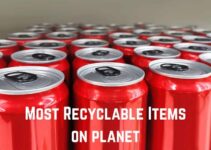When you hear of fiberglass, the first thing that probably comes to your mind is mechanical strength, permeability, and stability. These are the distinguishing characteristics of fiberglass. Fiberglass, a form of plastic reinforced with glass fiber, is used for different applications because of its unique properties.
Fiberglass is a combination of resin and reinforced plastic, making it a very strong and extremely durable material. There are over forty thousand applications of reinforced fiberglass, and about five million metric tons of fiberglass are manufactured annually. So, you see how valuable and useful fiberglass is.
The production of fiberglass began in the 1930s, and it was used as an insulation material for building. Since then, improvements have been made in the manufacturing process of fiberglass to create properties that will be suitable for different applications.
With the rising demand for fiberglass, there has been an increase in the production rate of fiberglass globally. But, does this important plastic have any impact on the environment? Are you thinking of how you can dispose of fiberglass? Don’t worry; we have some interesting tips you can try out.
Can You Recycle Fiberglass?
Fiberglass is produced from the same glass used in the production of windows and drinking glasses. For fiberglass to be produced, the glass is heated until it becomes molten. Then, it is forced through superfine holes to create thin glass filaments measured in microns.
You must know how fiberglass is manufactured; it will help you understand if it can be recycled or not. In this case, fiberglass cannot be recycled. Most recycling facilities and transfer stations do not accept fiberglass because it is almost impossible to recycle. Let us see why fiberglass is not recyclable.
Fiberglass is not recycled because grinding and shredding will destroy most of the glass fibers. And when it is destroyed, the strength, durability, size, and usefulness of the fiberglass for future applications is reduced drastically. Although fiberglass is a type of plastic, it is not as recyclable as other plastics.
First, there is little demand for recycled fiberglass, so there is an increase in its production rate. Another issue with recycling fiberglass is that the equipment that can recycle it is very expensive and unavailable to recycling facilities. Hopefully, later in the future, there would be a way to recycle fiberglass without affecting glass fibers.
Remember we said fiberglass is not recyclable, you should know that it can still be recycled. However, if fiberglass is to go through the recycling process, the glass fibers will be reduced and the value of the recycled fiberglass diminished. So, this is the reason fiberglass is not recycled.
Nevertheless, we will look at the three major processes of recycling fiberglass.
Fiberglass Grinding
This is the first process; the fiberglass is chopped into tiny pieces and shredded into smaller pieces or powder used to produce other products. However, this process involves hard labor and damages the glass fibers. So, recycled fiberglass cannot be used the same way new glass fiber is used, as it can only be used as a filler in cement, artificial wood, or asphalt.
Fiberglass Incineration
In this process, fiberglass is used to generate heat for other purposes. For example, fiberglass is used to make steam to power turbines to generate electricity. The residue, the leftover fiberglass, can be used for other purposes. But, the ash remaining after the incineration is deposited in landfills.
The ash is organic because fiberglass contains about twenty-five to thirty percent organic material. This entire process is referred to as thermal oxidation, and during this process, the glass fibers are damaged by the heat making them useless.
Fiberglass Pyrolysis
During this process, fiberglass is chemically decomposed or transformed into one or more recoverable substances. This process is done by heating the fiberglass to a very high temperature in a deoxygenated environment. The difference between pyrolysis and incineration is that incineration is done in an oxygenated environment, and pyrolysis is in the absence of oxygen.
After fiberglass has been pyrolyzed, three substances are recovered, pyro-oil, pyro-gas, and solid by-product. All three can be recycled. The pyrogas are clean, have the same energy content as natural gas, and can even be used as an alternative to natural gas.
How Long Does It Take To Decompose Fiberglass?
To produce fiberglass, glass, plastic, and resin have to undergo many chemical processes. These processes are what make fiberglass have its unique properties and versatility. However, with all these chemical processes used to manufacture fiberglass, can we say fiberglass is compostable? And how long does it take to decompose?
Fiberglass does not decompose; regardless of the weather, chemicals, and other environmental factors, fiberglass cannot be broken down by microorganisms. The “fiber” in the name represents plastic, and plastic does not decompose, neither does glass.
Most fiberglasses are designed to have a long lifespan; all the processes and additives make fiberglass very strong and durable. The properties of fiberglass make it versatile but are the main reason it cannot be composted. Trying to decompose fiberglass by dumping it in the compost bin will not yield any results because the fiberglass will not break down.
Is Fiberglass Bad for the Environment?
The rise for more environmentally friendly products is with good cause. For a long time, we have used materials that have caused more harm than good to the environment. And we are paying the price for our negligence now; the melting of the polar ice caps, the depletion of the ozone layer are one of the results of our activities.
With these in mind, we are now conscious of everything we do and produce, ensuring everything has positive rather than negative impacts on the environment. This has caused people to ask if fiberglass is good or bad for the environment.
Seeing the raw materials used to manufacture fiberglass, you will conclude that it would not be environmentally safe because it has plastic polymers as a major raw material. But, the reverse is the case. Fiberglass is one of the most environmentally friendly products man has manufactured.
Most people do not know that the main raw material used in the production of fiberglass is sand (silica), not plastic. Silica is naturally abundant and a non-depleting product. Mining silica is sustainable and can be done in areas like badlands and deserts that are low on biodiversity.
Compared to the mining and processing of other construction materials like concrete and metals, fiberglass is the least energy-intensive, reducing greenhouse emissions and the consumption of fossil fuels.
Fiberglass is more harmless than many materials. For example, the thermal conductivity of aluminum is five hundred times more than fiberglass’. Fiberglass has an extremely low thermal expansion, so it has a lower indoor energy consumption than other materials.
Fiberglass is designed to last forever. Let us look at the composition of the individual materials used to produce fiberglass; glass is very brittle, but its tensile strength increases when it is reduced to fibers. When reinforced with polyester resin, it becomes very durable and long-lasting.
So, when you use fiberglass as a building material, you do not have to worry about it rusting or deforming over time. Fiberglass does not require periodic maintenance, repair, and replacement like other materials.
Is Fiberglass Eco-Friendly?
Plastic products are one of the major items harming the environment. Many countries are enacting laws to reduce the use of plastic and encourage the use of other environmentally friendly alternatives. Fiberglass is a byproduct of plastic but is it eco-friendly, or is it dangerous to the environment like other plastic products?
The carbon dioxide released during the manufacturing process of fiberglass is less than half of that of concrete and a third of that of steel. So fiberglass has a lesser carbon footprint than most materials, making it eco-friendly. There are hardly any harmful by-products released or created during the production of fiberglass.
The production of metals like aluminum and steel has more negative impacts on the environment than fiberglass. The resin used to manufacture fiberglass is produced from refined crude oil, making it completely organic and eco-friendly.
To make fiberglass more durable and long-lasting, none of the processes involved poses a threat to the environment, like the painting of steel or hot-dip galvanizing of other materials. Everything needed to make fiberglass long-lasting has been done during the production process, so there are no finishing operations.
How Do You Dispose of Fiberglass?
You are now aware that fiberglass is very durable and long-lasting. It cannot be recycled, nor can you compost it. How then can you dispose of fiberglass without causing any harm to the environment? We will look at some of the ways you can dispose of fiberglass.
If you have fiberglass insulation that you want to dispose of, here is what you should do with it. First, ensure they are still in good condition. If they are in good condition, you can reuse it by putting it in another place where it is needed. Ensure you contact an expert because of the risk of exposing yourself to harmful shards of fiberglass.
However, if you have a fiberglass boat and want to dispose of it, here are some creative ways to go about it.
1. Donate It To Charity
Helping and assisting others is real humanity. If you have an old or unwanted fiberglass boat, you can donate it to charity. Many charities specialize in upcycling old boats, and they would appreciate you donating a boat to them. Your donated boat would be repaired, and it could help the less privileged get a boating experience for the first time.
Different vessel-turn-in-programs (VTIP) will arrange a drop-off point for your vessel, and members will pick it up. You will find several VTIP programs in your state.
2. Sell It To a Salvager
Some people are willing to purchase your old fiberglass boats. When you find one, he will come and access the salvage value of the boat, and if it is economically valuable and profitable, he will offer you a good price. Otherwise, you can expect a lower price. But you aim to dispose of it, so the price should not be a big deal to you.
3. Fiberglass Boat Pool
Another creative way of upcycling old fiberglass boats is to make a DIY boat pool. It will not cost you much resources or money to make. First, clear out all the grasses and dirt from the boat, repair all leakage, and clean it thoroughly.
You can paint it using some waterproof paint to give it a desirable and beautiful look. When you are done with the cleaning and painting, you can fill it with water, and you have a boat pool to relax and cool off.
Conclusion
To reduce our impact on the environment, we must ensure all unwanted and waste materials are properly disposed of. With the versatility of fiberglass, it is possible to have some items made of fiberglass lying around in your home.
If you are looking for how to dispose of fiberglass without causing any harm to the environment, this blog post will help you with that. We have a few upcycling ideas you can try out.
References:
https://www.fibreglassdirect.co.uk/blog/post/what-is-fibreglass-or-fiberglass
https://www.phelpsgaskets.com/blog/fiberglass–types-properties-and-applications-across-industries
http://yachtrecycling.org/materials-recycle/fibreglass-recycling/how-is-fibreglass-recycling-done/






